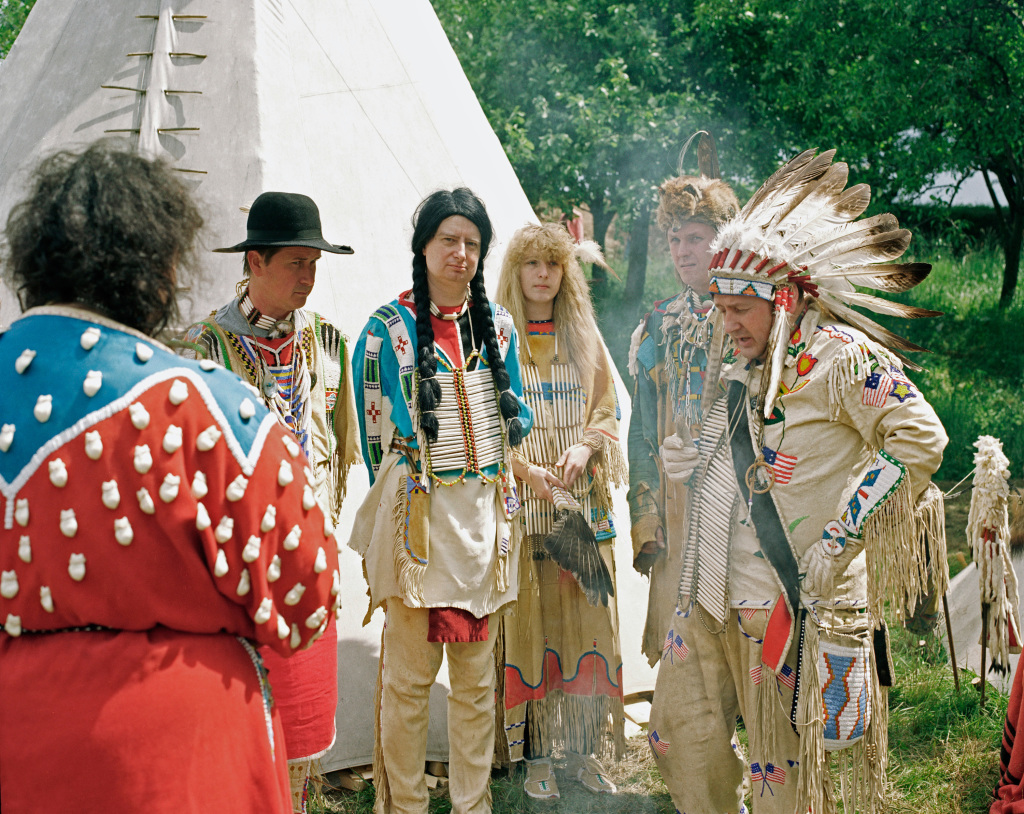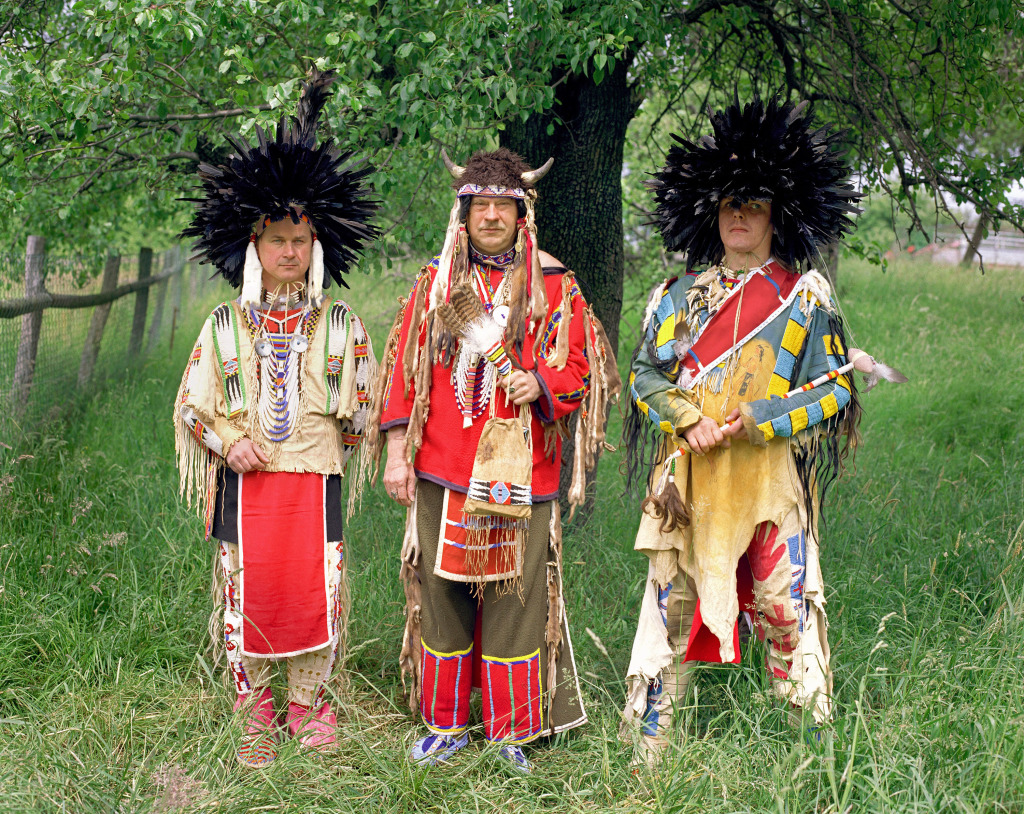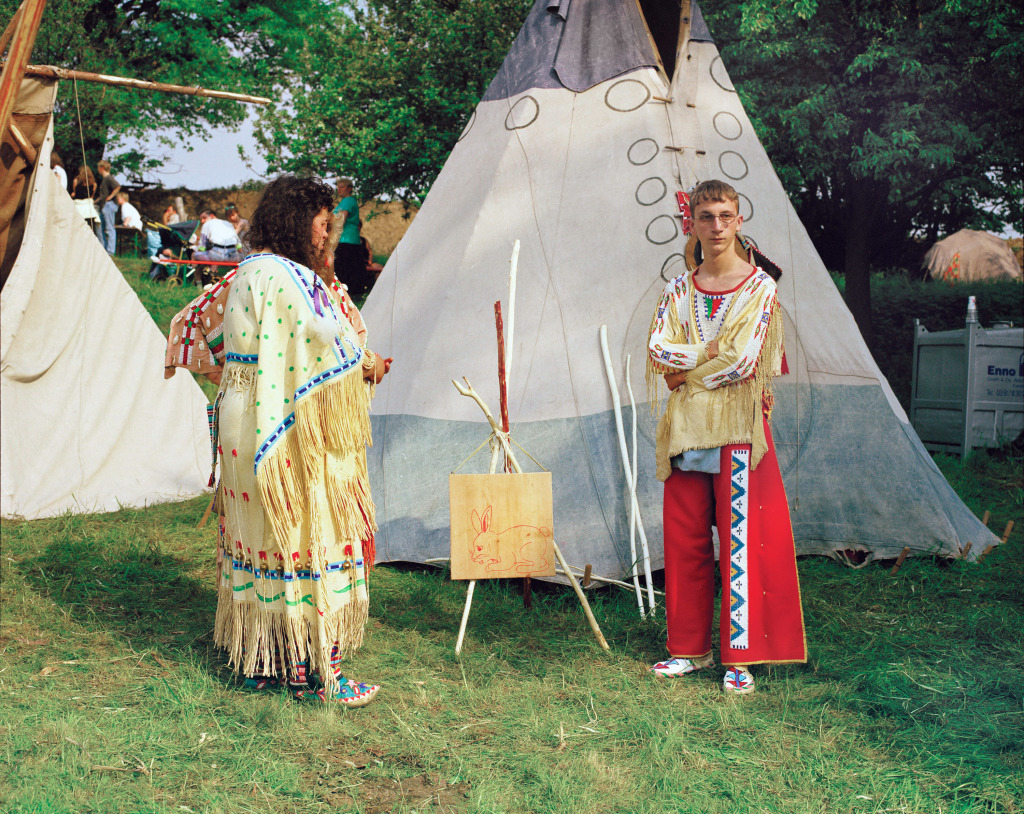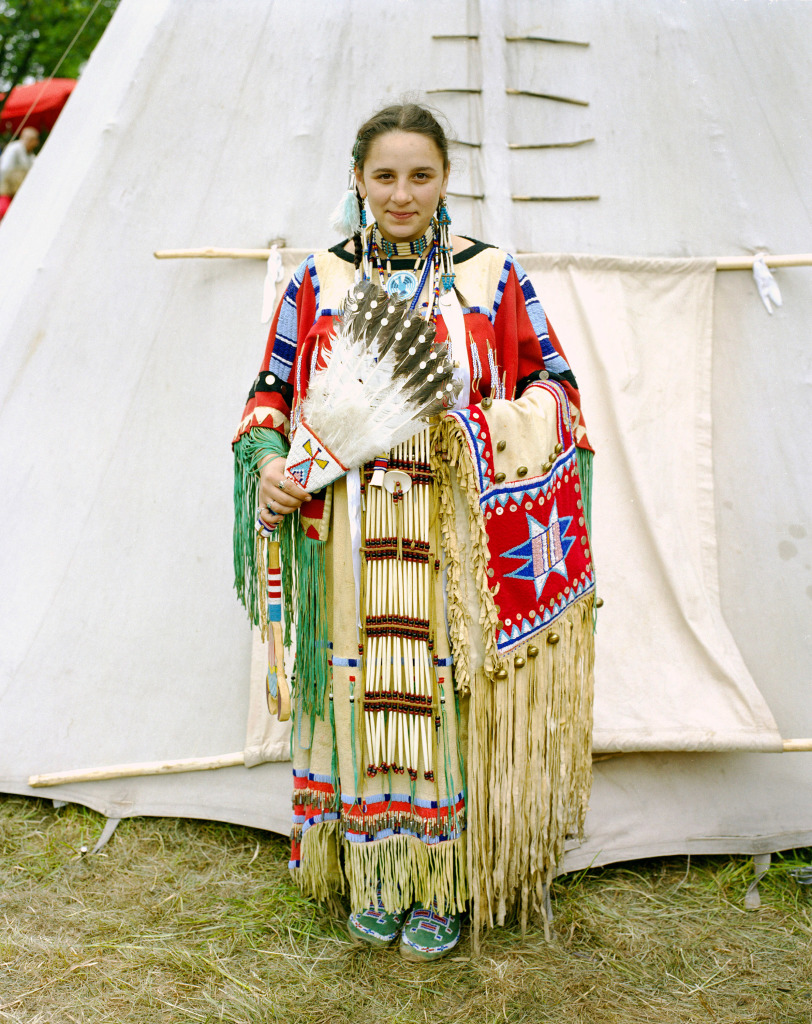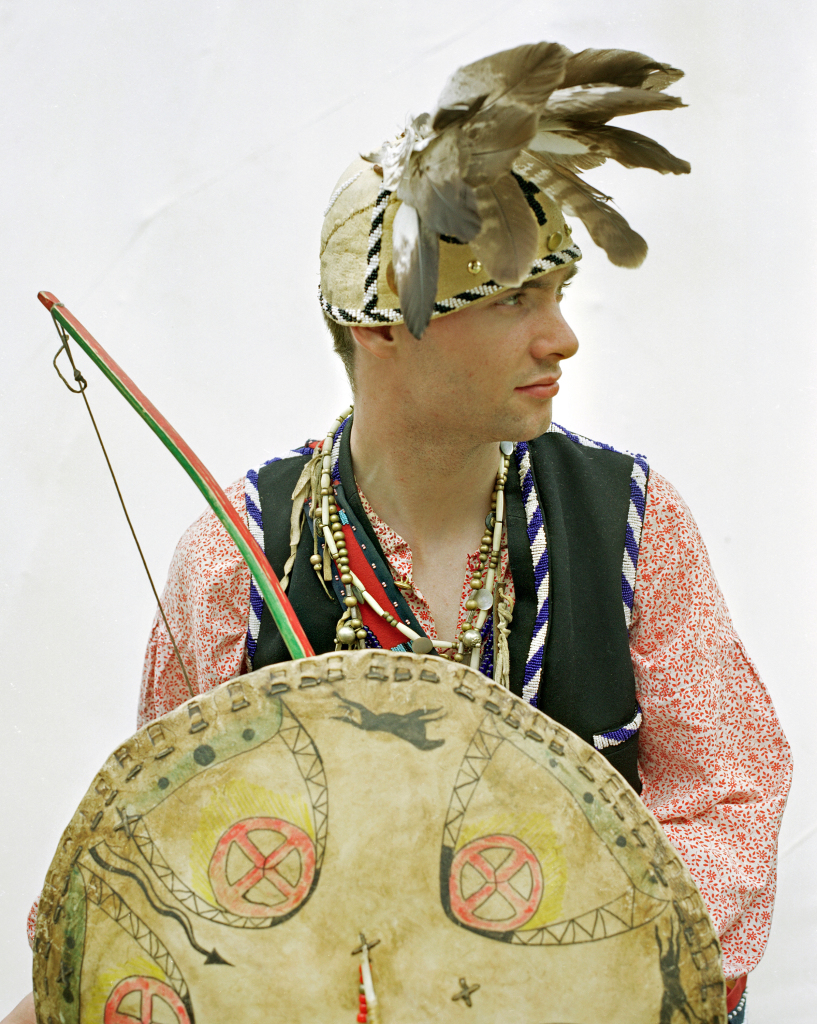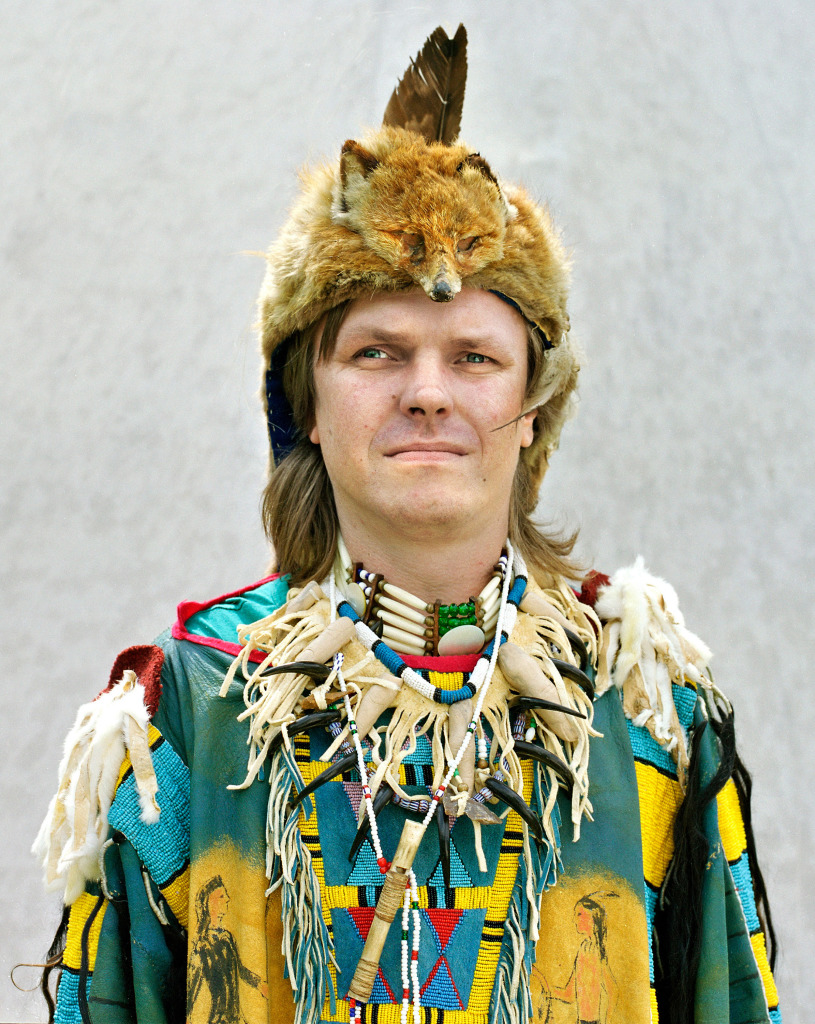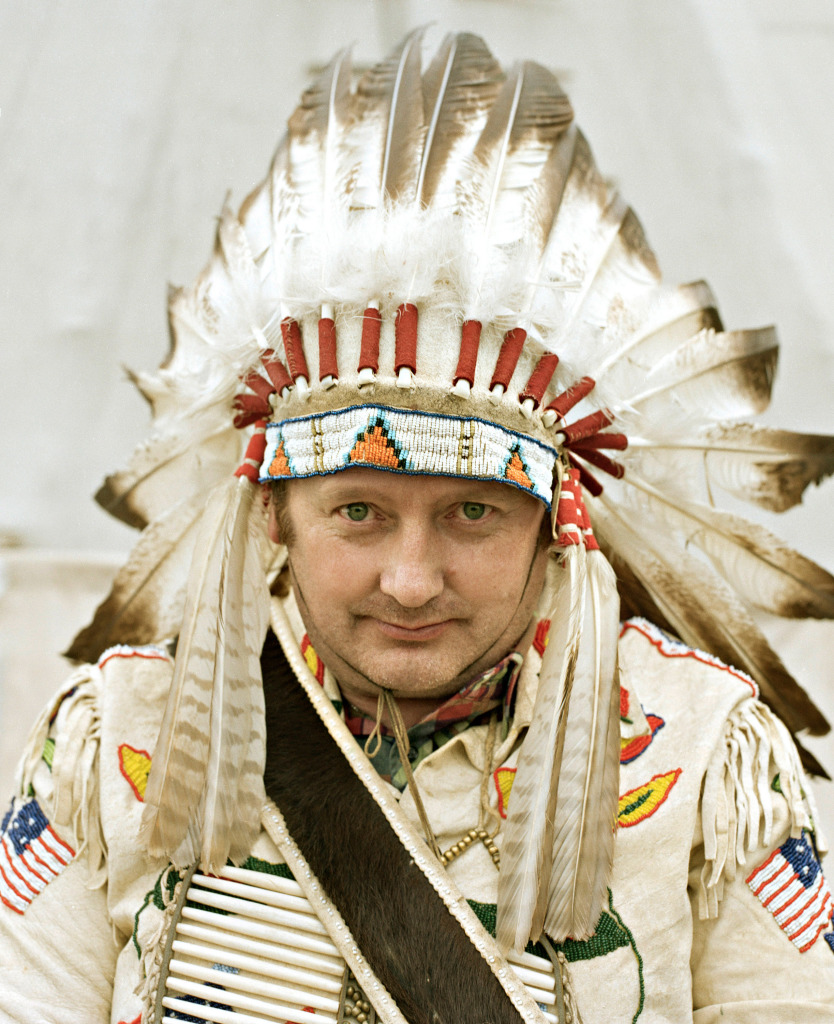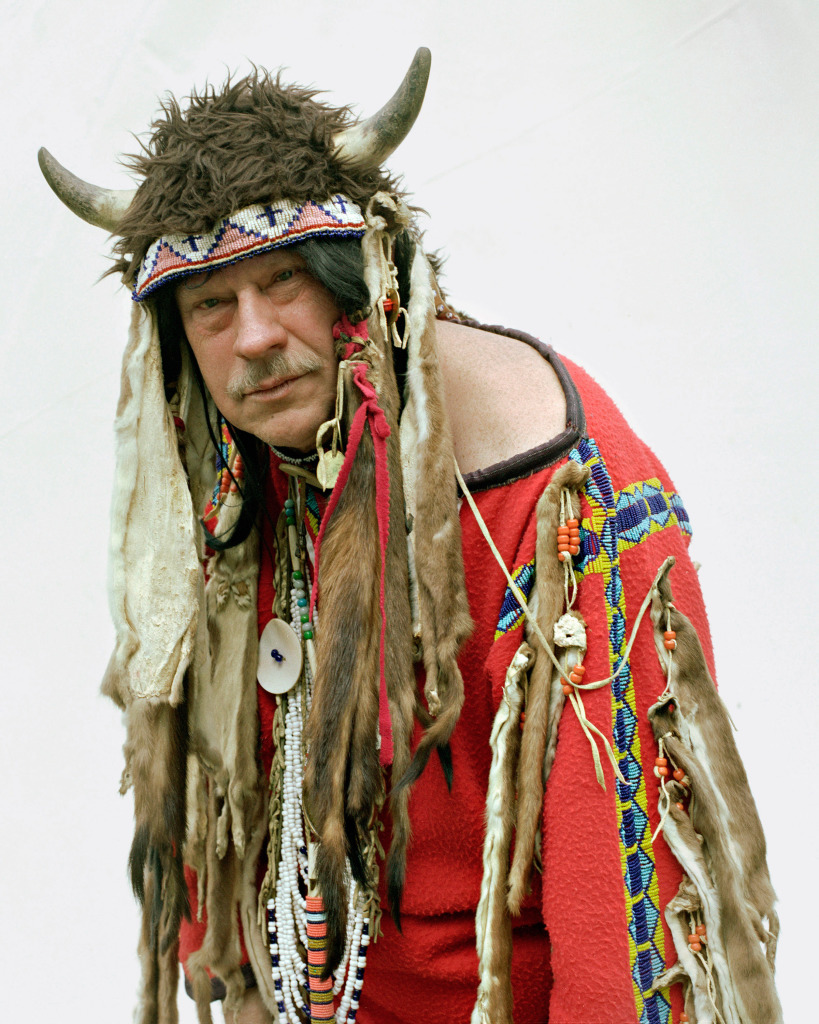


German Indians
No country has more of a fascination with Native Americans than Germany. For more than a century, hobby clubs, open air theater festivals, fairs, and carnival costumes have been developing. Besides a deep-rooted romantic view of a pre-industrial past, and the imagery of Cowboy Western movies, the primary cause of this fascination is the work of the 19th century writer Karl May. Although he didn’t visit North America until late in life, he wrote many novels about the Wild West, portraying Native Americans as heroes and whites as villains.
Although the “pro-Indian” slant of Karl May can be understood as a progressive, anti-colonial message, his writings were also an important part of Nazi mythology. German fascists identified with the Indian as noble savage and as the victim of a modern, corrupt, overly intellectual world. The Nazis’ home-spun victim mythology formed the basis for retaliatory aggression against those who they perceived as threats. Ironically, while Hitler was researching American Indian reservations as models for concentration camps, he made his generals carry around volumes of Karl May’s writings.
After World War II, the east-west division of Germany caused a split in the culture of Native American emulation. In East Germany Indian fan clubs increased because they were a legal opportunity to gather in large numbers and Karl May’s anti-American/anti-capitalist messages conformed to eastern bloc doctrine. In West Germany, the influx of American popular culture expanded the imagery of the American West, but conflicted with Karl May’s sympathetic descriptions of indigenous Americans. Although an intense pro-Americanism developed after World War II, the notion of Americans as invaders, of course, ties in with the resentment felt during the U.S. military occupation. Also, postwar Germans, discouraged from nationalism and group ritual, sense a permission to find themselves in other ethnic groups. And, perhaps, criticism of atrocities against Native Americans also gives Germans some sense of relief from their own shame of the holocaust.
Karl May’s birthday is celebrated annually in his hometown of Radebeul, near Dresden, by hundreds of Germans dressed as Native Americans. Loosely formed groups, called tribes, gather from all over the country. The local tribe is led by the self-proclaimed chief of this area, Old Bull, also known as Gerhard Fischer. Tourists stream through the two-day festival to witness the various encampments and lifestyle enactments. A broad range of Native American cultures are painstakingly researched in the belief that they are being perverted by modernity and in need of outside preservation. However, artifacts and customs are imaginatively combined, with little concern or explanation as to which specific nations they represent.
Andrea Robbins & Max Becher 1997/98
